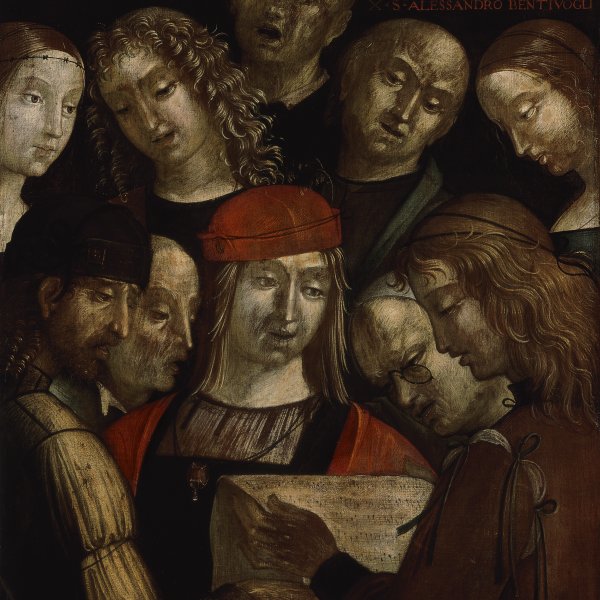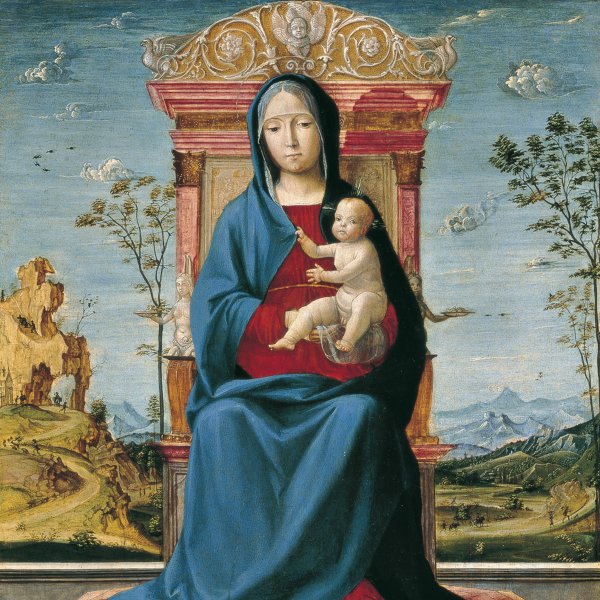Lorenzo Costa
Ferrara, ca. 1460-Mantua, 1535
Costa belonged to a family of painters and was one of the leading figures of the Ferrarese school. He trained with Ercole de’Roberti. In 1483 Costa moved to Bologna where he became the preferred artist of Giovanni II Bentivoglio, remaining there until 1506. One year later he moved to Mantua and was painter to the Gonzaga court, succeeding Andrea Mantegna. Most of Costa’s works were identified in the 20th century by Roberto Longhi (1934). Costa’s style reveals the influence of Ercole de’Roberti and Cosmè Tura, as well as that of Francesco Francia, whom he knew well and with whom he collaborated on various projects. Costa travelled to Tuscany and Umbria in 1490 and from that period onwards was more interested in the formal aspects of his work, which now reveals the influence of Perugino and Filippino Lippi.
Costa’s first documented work is The Bentivoglio Family in San Giacomo Maggiore, Bologna, in which the family group kneels before the Virgin. He also painted works for the Bentivoglios in their family chapel in that church, notably the frescoes of The Triumph of Fortune and The Triumph of Death. From 1491 onwards he worked with Francesco Francia in San Petronio, Bologna and his last work in that church was the altarpiece for the Rossi chapel (1492). This depicts The Virgin and Child with Saints Sebastian, James, Jerome and George. Also from this period is A Concert (National Gallery, London). In 1504 Isabella d’Este commissioned him to paint an allegory for her studiolo in Mantua (Musée du Louvre, Paris). Costa painted numerous portraits for the Gonzaga court, of which some have survived including that of Battista Fiera (National Gallery, London). His last known work is signed and dated 1525 and depicts The Virgin enthroned with Saints (church of San Andrea, Mantua). Costa died in that city on 5 March 1535.
Costa’s first documented work is The Bentivoglio Family in San Giacomo Maggiore, Bologna, in which the family group kneels before the Virgin. He also painted works for the Bentivoglios in their family chapel in that church, notably the frescoes of The Triumph of Fortune and The Triumph of Death. From 1491 onwards he worked with Francesco Francia in San Petronio, Bologna and his last work in that church was the altarpiece for the Rossi chapel (1492). This depicts The Virgin and Child with Saints Sebastian, James, Jerome and George. Also from this period is A Concert (National Gallery, London). In 1504 Isabella d’Este commissioned him to paint an allegory for her studiolo in Mantua (Musée du Louvre, Paris). Costa painted numerous portraits for the Gonzaga court, of which some have survived including that of Battista Fiera (National Gallery, London). His last known work is signed and dated 1525 and depicts The Virgin enthroned with Saints (church of San Andrea, Mantua). Costa died in that city on 5 March 1535.






